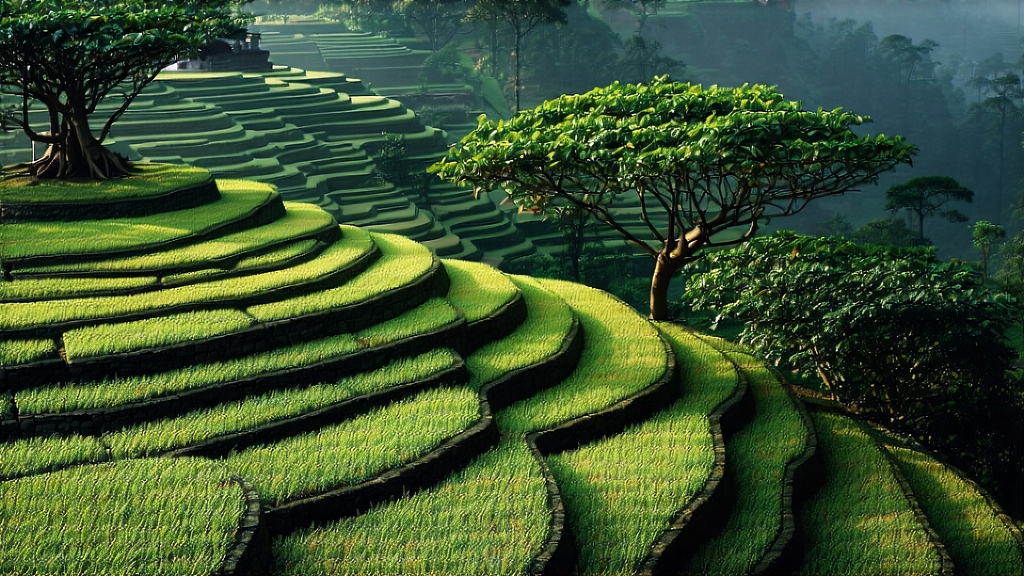
If oolong tea is the golden mean between green freshness and black depth, then Phoenix Dancong is the genre’s most flamboyant soloist. Grown on the phoenix-shaped ridges of Feng Huang Shan in northern Guangdong, this “single-bush” oolong has been seducing tea traders since the Song dynasty, when imperial caravans carried compressed tribute cakes northward along the Mei-ling Pass. Locals still recount the legend of Emperor Zhao Bing, who tasted a tea so fragrant that he decreed its mother tree should bear the name of the mythical bird forever. Whether myth or marketing, the name stuck, and today “Dancong” literally means “single bush,” a reminder that every batch can be traced to one genetically distinct, centuries-old tree.
From roughly 30,000 hectares of mountain gardens, growers have identified more than 80 aromatic profiles, each associated with a particular ancient tree. The most celebrated include Huangzhi Xiang (orange blossom), Milan Xiang (honey orchid), Yulan Xiang (magnolia), and the elusive Jianghua Xiang (ginger flower). Rather than blending, farmers pick, wither, and process each tree separately, turning biodiversity into cup-defining personality. The result is a living library of flavor: one bush may whisper of lychee and gardenia, its neighbor shout of almond and cinnamon.
Crafting Phoenix Dancong is a six-act drama spread across 24 hours. Act I begins at dawn when two-leaves-and-a-bud are plucked from 300-year-old Song Zhong stock, the mountain air still cool enough to lock in volatile aromatics. Act II is solar withering: leaves are laid on bamboo trays tilted toward the rising sun for 20 minutes, softening cell walls and initiating enzymatic oxidation. Act III moves indoors for “cooling green,” where the leaf is piled 3 cm deep and turned every hour; here, grassy notes evaporate while floral precursors concentrate. Act IV is the signature “shaking green”: workers toss the leaf in 1.5-meter-wide rattan sieves with a rhythmic flick of the wrist that bruises margins just enough to invite 30 % oxidation. The moment the edge turns chestnut while the vein stays jade, firing begins. Act V employs a 200 °C drum roaster for seven minutes, halting oxidation and sealing in the honey-orchid signature. The final act is charcoal baking, unique in the oolong world: low-temperature embers of lychee wood kiss the leaf for up to 30 hours across several weeks, layering mineral depth and a whisper of smoke that ages gracefully for decades.
To brew Phoenix Dancong like a Chaozhou tea master, you need only four tools: a 100 ml gaiwan, a fairness pitcher, three aroma cups, and a kettle that can hold 95 °C water with military precision. Start by “awakening” the leaf: rinse 5 g—about a heaping tablespoon—with a 3-second flash infusion, discarding the liquor while warming the cups. The first real infusion lasts 8 seconds; pour in a high, thin stream to aerate and cool the water by 2–3 °C, protecting tender aromatics. Subsequent infusions increase by 2–3 seconds, yielding up to twelve rounds before the leaf surrenders. Chaozhou etiquette demands three sniffs: raise the empty aroma cup to your nose, inhale once for top florals, twice for honeyed body, thrice for the mineral “mountain rhyme” that locals call yun. Only then do you sip, letting the liquor coat the tongue while breathing through slightly parted lips to retro-nasalize the scent.
Tasting notes unfold like acts in an opera. The dry leaf smells of dried apricot and toasted sesame. The first infusion delivers a bright, almost electric orchid note that snaps open the palate. By the third cup, honey thickens the texture, while a cooling menthol sensation creeps up the throat—what aficionados prize as “returning sweetness.” Infusions six through nine reveal a darker register: cinnamon bark, baked plum, and the flinty minerality imparted by decomposed granite soils. The final cups fade into soft almond milk, a gentle denouement that invites reflection rather than lament.
Storage is simple yet critical. Keep the tea in an unglazed clay jar fired from local Feng Huang clay; its micropores allow the